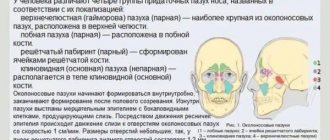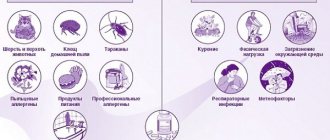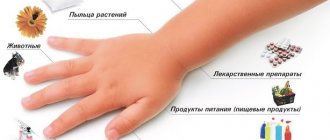28.07.2017
Many residents of the country are familiar with allergic bronchitis. This inflammatory disease can appear at any age, and is very often observed in children, although adults also suffer a lot from this disease.
Allergic bronchitis appears as a result of an allergic reaction of the medium or large bronchi and is formed against the background of prolonged contact with a variety of allergens.
What kind of disease is this, why does it occur, what are the symptoms and treatment of allergic bronchitis? These questions are often asked by people who suspect an illness.
A diagnosis such as allergic bronchitis in preschool or adolescence can be quickly cured. But, if treatment is not started immediately, the disease becomes chronic and cannot be completely cured.
Modern medicine continues to invent medicines for various diseases, but today it is not possible to cure a person from such a unique type of bronchitis as allergic bronchitis.
You can only diagnose the problem and try to alleviate the course of the disease. But any allergy sufferer should know how to treat allergic bronchitis and prevent complications.
The main symptom of allergic bronchitis is a lingering dry cough.
Features of allergic bronchitis
A disease such as bronchitis appears as a result of inflammatory processes on the bronchial mucosa, which can appear for various reasons. But sometimes the bronchial mucosa is affected not by ordinary viruses, but by various allergens.
And in this case, the immune system responds to an external stimulus, which consists of:
- irritation of the nerve endings of the organ;
- dilation of blood vessels;
- muscle contraction.
And such an immune response leads to the appearance of a cough, which is allergic bronchitis. This type of bronchial disease is also called asthmatic bronchitis.
This disease lasts for a long period, and after completing a course of treatment, relapses may occur. This is a serious problem that makes the usual way of life difficult; if allergic bronchitis appears, treatment is necessary.
As soon as the first symptoms appear, you should quickly contact an allergist, who will identify the cause of the disease and prescribe appropriate treatment.
Symptoms
The main distinguishing symptom of bronchitis is a cough. A cough is a response of nerve endings to an irritant, as a result of which the blood vessels dilate, resulting in muscle spasm. As long as the allergen is present in the body, the attacks of painful coughing do not stop. A particularly strong reaction occurs at night or with direct contact with the substance that caused the allergy.
The temperature, as a rule, does not increase or is subfebrile, no more than 37.2 °C.
In the early stages of the disease, the cough is dry, and as the inflammatory process intensifies, purulent sputum appears in the bronchi, making breathing difficult. The respiratory organs try to get rid of phlegm by spontaneously contracting. At

When listening with a stethoscope, the doctor clearly hears dry, moist or wheezing sounds. With allergic bronchitis, wheezing is heard when inhaling. This is a distinctive symptom from other bronchial diseases.
Another sign of the presence of an allergen is the absence of asthma attacks, since only the large and medium bronchi become inflamed.
The mucous membrane of the paranasal sinuses may swell, causing rhinosinusopathy and excessive nasal discharge. Also, symptoms often resemble tracheitis or laryngitis. This is all due to the same inflammation of the mucous membranes of the trachea and larynx.
During an exacerbation, patients complain of general weakness, fatigue, and a feeling of ebbs and flows at normal temperatures. Sometimes watery eyes or conjunctivitis may occur.
Causes of allergic bronchitis
Allergies have many varieties.
Some people react to the flowering of some plants by sneezing and a runny nose, while others, while washing, their eyes begin to water from the powder, and for others, after consuming a product or using a cosmetic, a rash begins to appear on the skin.
Some people experience a prolonged coughing attack for no apparent reason.
From all this we can conclude that the main cause of allergic bronchitis in adults and children is the effect of irritants on the bronchi, which settle on the mucous membrane as a result of inhaling air with an allergen.
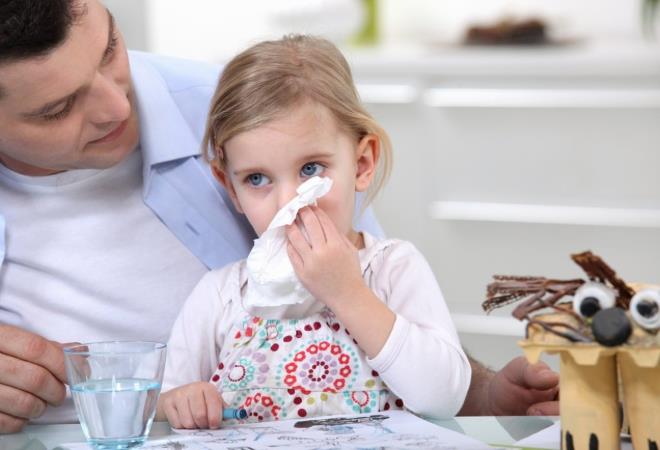
In the second stage, a dry cough becomes wet
There are a number of common allergens that cause bronchitis from allergies:
- plant pollen;
- animal fur - domestic;
- feathers of some birds;
- detergents and cleaning products;
- apartment dust and mites;
- cosmetics;
- nutritional supplements;
- tobacco smoke;
- medical preparations and their components;
- bacteria;
- food products.
Food products can be especially highlighted from this list, since almost any product is a potential allergen. If the cause is a certain product, then it is difficult to establish, since the diet is different and it can be difficult to identify which product is an allergen.
Symptoms of allergic bronchitis
The first and main symptom of allergic bronchitis in adults and children is attacks of dry cough, which either disappears or appears again, and intensifies when an allergenic irritant is nearby. In particular, coughing attacks can be annoying at night, which interferes with proper healthy sleep.
Occasionally, body temperature may rise to 37-37.5 degrees, but this happens rarely. And if a runny nose is added to everything, then your health becomes as painful as during a cold.
At the first stage of the disease, the patient suffers from a dry cough, but over time, as allergic bronchitis develops, the following symptoms appear:
- cough becomes wet;
- breathing becomes difficult;
- During inhalation and exhalation, whistling and wheezing may be heard;
- shortness of breath appears while walking.

If you have symptoms, you should consult a doctor immediately
As the disease progresses and the cough changes from dry to wet, the general condition of the patient becomes a little easier. When visiting a doctor, he observes distinct wheezing while listening, which, unlike ordinary bronchitis, is heard during inhalation and not exhalation.
But when the disease worsens and the body’s condition becomes much worse, some more symptoms of allergic bronchitis appear:
- increased sweating;
- conjunctivitis;
- presence of mucous sputum;
- the appearance of small rashes on the skin;
- general fatigue, weakness.
Rhinitis may appear against the background of the main symptoms, resulting in nasal discharge and constant sneezing. This occurs due to changes in the sinus due to exposure to various allergens.
Disease in adults
The allergic form of the disease is characterized by paroxysmal episodes, which involve a change in the phase of exacerbation by complete remission. In the adult population, bronchitis of allergic origin is characterized by the following manifestations:
- Cough attacks occur at night.
- During the exacerbation process, there is an increase in body temperature.
- Cough may be caused by eating food, contact with animals, or taking any medication.
- The cough may simultaneously be accompanied by clear discharge from the nasal cavity, itching in the eyes or skin rashes.
- Exhalation is difficult: the entire respiratory process is characterized by whistling and wheezing.
When taking therapeutic measures, it is important to adhere to an integrated approach, the main goal of which is to identify the allergen and eliminate it from the patient’s life.
Stopping contact with the allergen
Based on the results of the tests, the origin of the allergen is revealed. If it is present in food products, it is necessary to exclude from the diet foods that contain a high degree of allergenicity. If the body is sensitive to environmental factors, it is important to limit contact with provoking substances or objects.
Use of antihistamine drugs
Also, the complex of treatment measures includes the prescription of antiallergic drugs, which, in accordance with the severity of the disease, are used orally or by inhalation. Taking this category of medications is stopped when the condition improves. If there are allergic manifestations that also affect the skin or eyes, medications are used in the form of drops, ointments or aerosols.
Strengthening the immune system
Along with drug therapy, it is important to pay special attention to strengthening the protective functions of the immune system. This can be achieved through hardening, playing sports, and proper nutrition.
Alternative Methods
These include homeopathy and physiotherapy, which help reduce allergic manifestations and normalize the body’s protective functions.
Allergic bronchitis in children
Allergic bronchitis in children occurs in an acute form and occurs as a result of an immune reaction to some irritant. This disease is observed in children of all ages, regardless of gender and race.
Allergic bronchitis in children, the symptoms of which can only be identified by a doctor, is a common disease, the cause is often difficult to determine.
But you can independently make an assumption about the presence of a disease in a child based on some signs:
- the child becomes lethargic;
- constantly wants to sleep;
- is constantly capricious;
- refuses to eat;
- The baby is crying and is in an excited state.
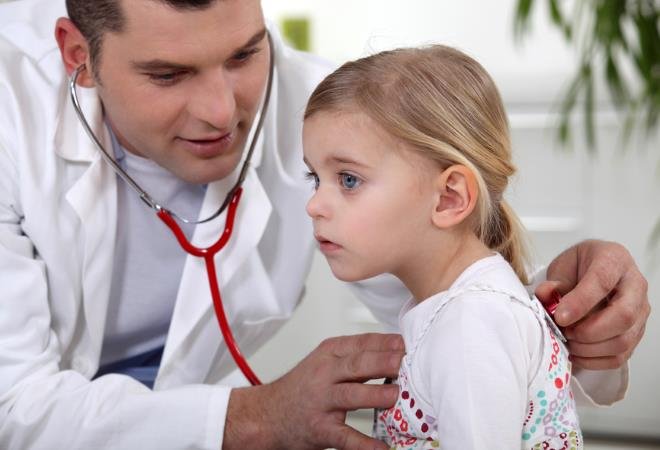
A feature of allergic bronchitis in children is the acute form of the disease
But the first and main symptom of allergic bronchitis in children is still periodic coughing attacks that get worse at night. These signs include: rash, sputum, runny nose, diathesis or laryngitis.
If you notice allergic signs and a severe paroxysmal cough in your baby, then you need to start treatment so that the disease does not occur in adulthood, but in a chronic form.
If asthmatic bronchitis exists for a long time, the child may experience a slight increase in body temperature, increased shortness of breath and the formation of cloudy, thick sputum.
In later stages, young children may develop respiratory failure. And to prevent this from happening, you need to immediately take the child to the doctor. The acute form of the disease usually lasts no more than 1 month. And having eliminated the source of the allergy itself, the disease may not return.
But if the disease becomes protracted and continues to progress, allergic obstructive bronchitis in children may develop, which will be more difficult to cure.
Classification of the disease
There are some differences in the course of the disease among different patients. Based on the severity of the symptomatic picture, allergic bronchitis is divided into several types:

Types of bronchitis
- Atopic is a lightning-fast, strongly expressed reaction of the body, easily monitored by bronchoscopy.
- Infectious-allergic – a slow course of the disease, accompanied by unexpressed symptoms.
- Allergic tracheobronchitis - highly sensitive to the action of foreign particles, participation in the inflammatory process of the trachea.
- Obstructive bronchitis - oxygen deficiency is caused by blockage or narrowing of the bronchi and larynx.
Any form of bronchitis of allergic origin should be subject to medical correction based on the use of an integrated approach adapted to the specific patient.
In cases where it is not possible to identify the allergenic factor and prescribe adequate therapy, there is a high probability of the formation of allergic obstructive bronchitis, accompanied by severe swelling of the bronchial mucosa. The disease is characterized by muscle spasms, leading to severe coughing attacks and a high risk of suffocation.
Allergic bronchitis in some cases causes the development of bronchial asthma, which is difficult to treat medically. The formation of complications of the disease in childhood can result in irreparable consequences.
Treatment of allergic bronchitis
Before prescribing treatment, it is necessary to first determine the cause of this disease and try to protect the patient as much as possible from the causative agent of the allergic reaction.
Treatment of allergic bronchitis should be prescribed by an allergist or pulmonologist. Self-medication is not recommended; it will most likely not only not cure the disease, but will lead to dire consequences.
After identifying the allergen and eliminating it, medications are prescribed, taking into account the patient’s condition and the degree of the disease.

The treatment of the disease should be carried out by a doctor - an allergist.
Treatment for adults and children consists of medications:
- antihistamines. Without them, treatment of allergic bronchitis will not be complete; they block allergic reactions and relieve swelling of the mucous membrane. You need to take the medication within 7 days. Effective antihistamines are: Suprastin, Diazolin, Kestin;
- anti-inflammatory and antibacterial agents. They are prescribed if the patient has an elevated body temperature and purulent sputum is produced. If there is a viral infection in the body, then immunostimulants are prescribed;
- drugs with expectorant effect and inhalation. They are necessary to treat cough and improve the separation and thinning of sputum. This can be inhalations with Dexamethasone, Bromhexine, Ambrobene, Mucaltin;
- drugs to relax muscles. Such medications can reduce swelling, improve the general condition of the patient and reduce symptoms. Intal is a very good remedy;
- sorbents and bifidobacteria. These products cleanse and normalize the functioning of the intestinal microflora, which is important for the body’s immune reactions. For this purpose, activated carbon, Linex, Bifiform are prescribed.
You should find out directly from your doctor about how to treat allergic bronchitis. In addition to drug treatment, the doctor may prescribe additional methods for treating asthmatic bronchitis, for example, physical therapy and massage, and traditional medicine.
Prevention
To avoid experiencing attacks of allergic bronchitis, it is recommended to follow several tips. First of all, it is periodically necessary to carry out wet cleaning in the apartment.
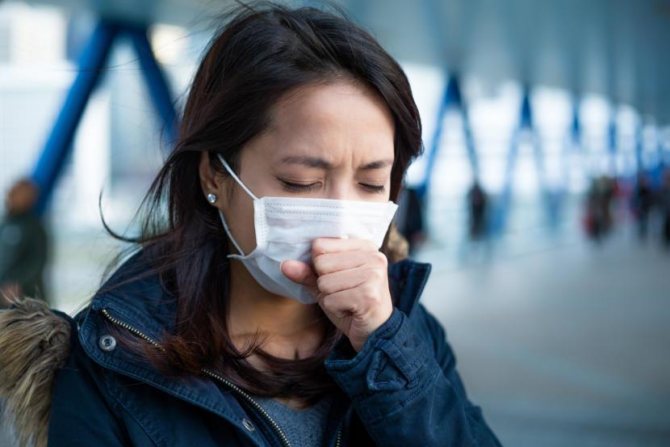
It is not recommended to have indoor plants, install upholstered furniture or use soft toys in the room where the patient lives. Contact with pets should be avoided. The menu should not contain products that can cause an allergic reaction. During the flowering season, it is not recommended to go outside (in extreme heat or windy weather). It is also necessary to promptly treat rhinitis and other viral diseases. The patient needs rest and fresh air.
Prevention of allergic bronchitis
Prevention of allergic bronchitis is the same in both adults and children. And the main preventive method is to avoid contact with an aggressive substance.
It is very important to prevent allergic bronchitis in adults and children, especially if there is a child in the house who suffers from allergies or has previously suffered from asthmatic bronchitis.
There are a number of preventive measures, which include:
- constant dust removal;
- carrying out wet cleaning at least 2 times a week;
- frequent change of bed linen for the patient;
- to give up smoking;
- strengthening the immune system;
- regular ventilation of the room;
- consumption of low-allergenic foods.
The most important thing in the presence of any disease, including bronchial asthma, is proper nutrition, moderate exercise and hardening.
Preventive measures
An allergy is an unfavorable relationship between a person and a substance, in which there is no infection. Prevention includes eliminating contact with the factor that provokes another relapse.
To prevent the patient from having an allergic reaction, it is necessary to follow basic rules:
- You should carry out wet cleaning in your living space as often as possible;
- adhere to hygiene rules;
- Animals should not be present or live in the room where the patient lives;
- do not forget to change bed linen every week;
- if a relapse occurs from a product, then exclude it from the diet;
- get rid of feather and down pillows;
- remove all plants from the patient’s room;
- to refuse from bad habits.
Common and allergic bronchitis are very similar. It is not a fact that home therapy will help provide effective and safe treatment. Initially, you need to consult a specialist, undergo the necessary tests, and then undergo a course of therapy prescribed by the doctor. The first symptoms are a reason to consult a specialist.

